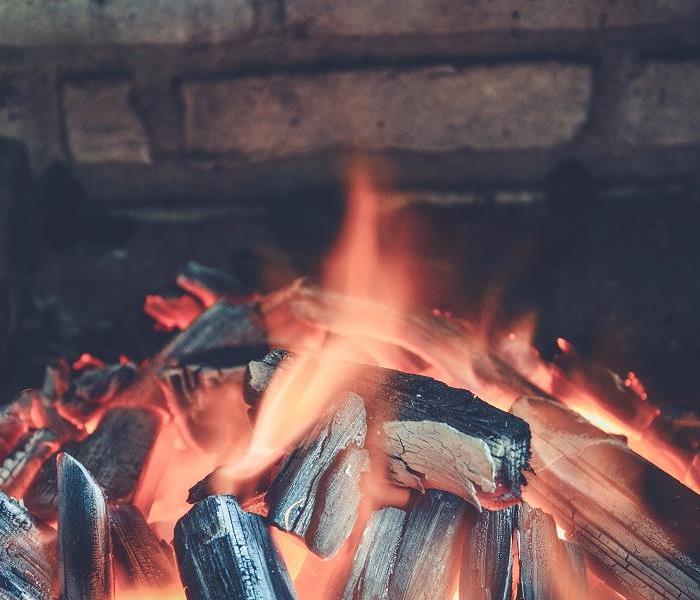Fix Up Your Firebox
10/24/2016 (Permalink)
Unsightly cracked and crumbling mortar inside a fireplace can be fixed in minutes with a few simple tools.
The mortar in most brick joints consists of sand, lime, and Portland cement. But in a fireplace, that mix just crumbles away when subjected to roaring wood fires. For this application, masons rely on a refractory mortar made of magnesium silicate, which can withstand beat up to 2,000 degrees F. Yet even refractory mortar can fail as the brickwork expands and contracts with repeated fires. Fortunately, fixing those damaged joints is a snap, thanks to high-temp fireplace mortars packaged in caulk tubes.
Tools Needed:
- Nitrile gloves
- 5-gallon bucket
- Sponge with abrasive pad
- Grout-removal tool with triangular carbide blade
- Stiff-bristle brush
- Wet/dry vac
- Nylon-bristle brush
- Refractory mortar
- Caulk gun
- Tuck-point trowel
STEPS
- Wash the brick: Put on nitrile gloves, then thoroughly scrub soot off the sides of the firebox with an abrasive pad on a wet sponge. Soot dissolves fairly easily when wet. The washing also dampens the brick and mortar, a necessary step before repointing.
- Dig out the loose mortar: Using a grout-removal tool fitted with a triangular carbide blade, scrape out cracked, loose, and crumbling mortar. Stop when the sides of the blade touch the edges of the brick. The blade’s triangular shape prevents it from going too deep (more than half the width of the joint). Clean the joints with a narrow, stiff-bristle brush and sweep up the mortar crumbs with a wet/dry vac.
- Wet the joints: Go over all the scraped joints with a nylon paintbrush, dipping repeatedly into a bucket of clean water. Refractory mortar bonds best to a damp surface, and the brush bristles ensure that all of the old brick and mortar are moistened.
- Caulk the joints: After slipping a tube of refractory mortar into a caulk gun, drag the tube’s nozzle over all the scraped mortar joints, leaving behind a fat bead of caulk. Make sure to fill any gaps between the hearth and the firebox floor.
- Pack the mortar: Use a 3/8-inch-wide tuck-pointing trowel to smooth and press the soft mortar firmly into each of the joints, then scrape off the excess with the trowel’s edge. In corners, use a gloved finger to pack and smooth.
- Wipe away the residue: Multiple swipes with a damp sponge with remove most of the mortar residue. Wipe the brick again in 24 hours, after the remaining residue dries to a haze. This mortar’s heat-resistant qualities kick in when it reaches 500 degrees. Either a heat gun or a small, brief fire will serve the purpose.
Keeping your firebox in tip-top shape is just one step in keeping your fireplace in good working order, and preventing home fires.






 24/7 Emergency Service
24/7 Emergency Service
